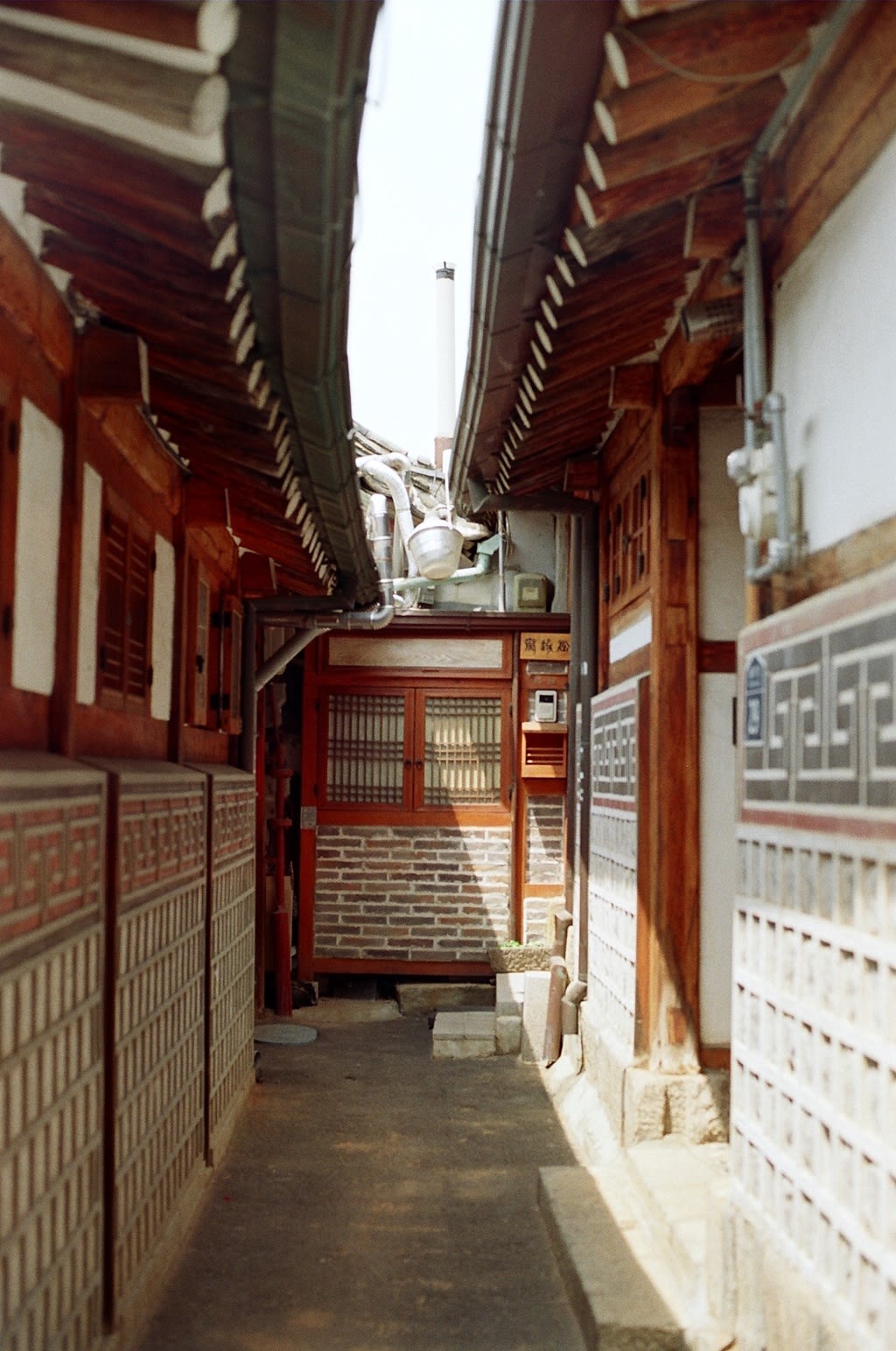
“I’m sorry miss, but these are the only ones we have with longer sleeves.”
The expression on the clerk’s face was apologetic as she left me to my devices among the racks of hanbok jeogori jackets. Sifting through the hangers that held my limited contenders, my fingers lingered on the different flower patterns embroidered onto every collar. No matter which one I chose, it would be too short. Once I had made that concession, the decision seemed almost trivial.
I settled on a white jeogori and a deep purple chima with a hem that awkwardly halted at the tops of my crew socks. The pattern on the jacket reminded me of the one I had as a child, and possibly the last time I had worn a hanbok. The clerk braided my hair to one side before sending me off, reminding me that my rental was due in two hours time. Tugging at the sleeves that fell comically short of my wrists, I opened the door and stepped out into the hanok village.
The village was still waking up to the world that Monday morning. On a weekend, I would have been one of hundreds twirling their skirts and floating through the streets in search of Gyeongbokgung or Changdeok palace, both of which offered free admission to those in traditional Korean dress. But that morning, my friend and I had practically the entire village to ourselves as the clock ticked on our two hours as Cinderella.
The hanok houses were as charming as I’d imagined. Clusters of them were woven together into an intricate maze, where the alleys were but a wingspan apart and the ever-so-slight crookedness of the woodwork were reminders of how much each house had endured to be standing here in front of me, 600 years after they were first built. Built from nature’s offering of wood, clay, and stone, it was the closest I’d feel to a natural landscape in the rest of my days spent in Seoul—in a way, I was traveling through a reconstructed thicket of trees.
Bunched up skirt in one hand and camera in the other, I was hardly the picture of grace one might expect of a girl in a hanbok. The scratchiness of the fabric and my inability to raise my arms anywhere past my chest in fear of tearing the seams were a reminder that I was wearing someone else’s clothes, photographing houses that weren’t mine. I had just under an hour left to play dress up.
We meandered through the alleyways, the mid-June sun spared any sort of formality as it radiated through the layers of my hanbok. Most of the hanoks had been turned into tea parlors, guest houses, and cultural attractions to service the hordes of tourists, foreign and domestic alike, who were in search of the same healing that I was. While neighboring streets faded into department stores and high rises that blended into Seoul’s metropolis, this village had managed to remain standing—but not without trading some of its soul.
After indulging in a few too many skirt twirling videos and posing under gingko trees, we found that our time was up. It dawned on me then; we had spent close to two hours walking through the village, and I had yet to use the camera I had been holding the entire time. We found ourselves in an alley before turning around, and it was then that I raised my camera to take its first shot of the day. I look at this photo now and am reminded of the complexity I felt that morning. From the way my clothes failed to fit and the way I could see Seoul’s skyline in my periphery, the gratitude I felt for being there was laced with the somber feeling that I was engaging in the very sacrifice this village had made in order to stick around.
I took off my hanbok and returned it to its rightful owners, and began the walk downhill in search of my next destination. On my way out, I walked by a banner raised by residents who remained in the village. It pleaded with tourists to respect their homes and speak quietly, from tenants who unwittingly found themselves living inside one of Seoul’s most popular tourist attractions.
With the one photo in my camera roll to humble me, I silently thanked the village and its tenants for their hospitality, and saw myself out.





Comments
There are no comments for this story
Be the first to respond and start the conversation.